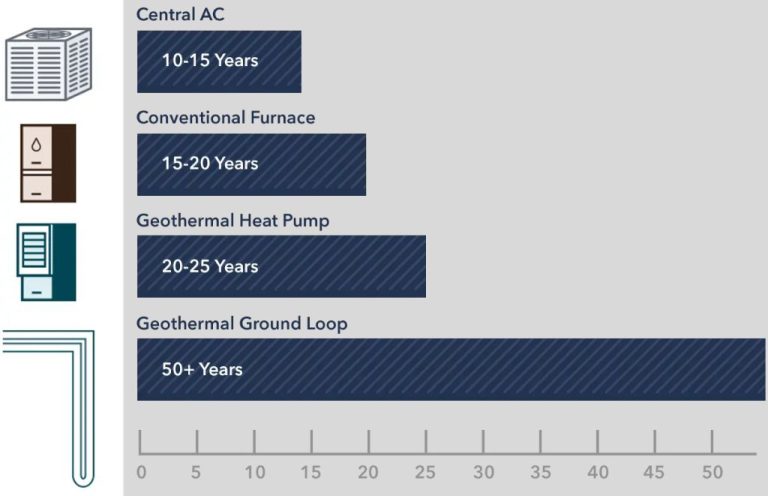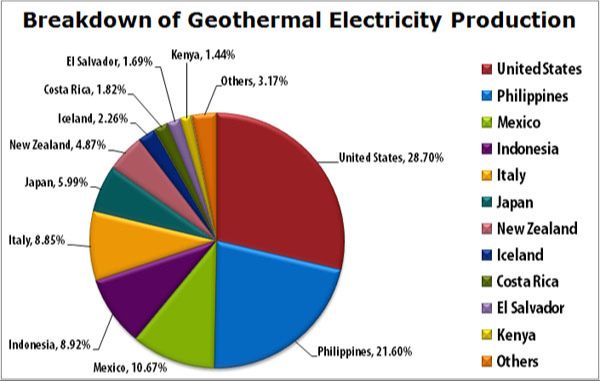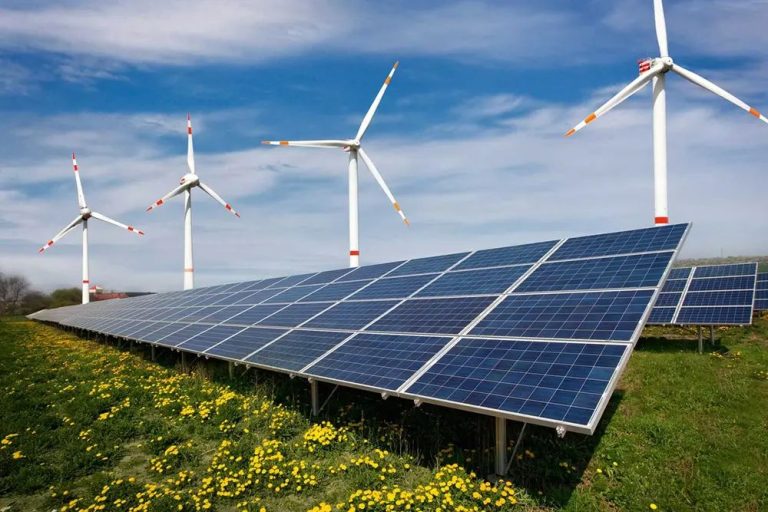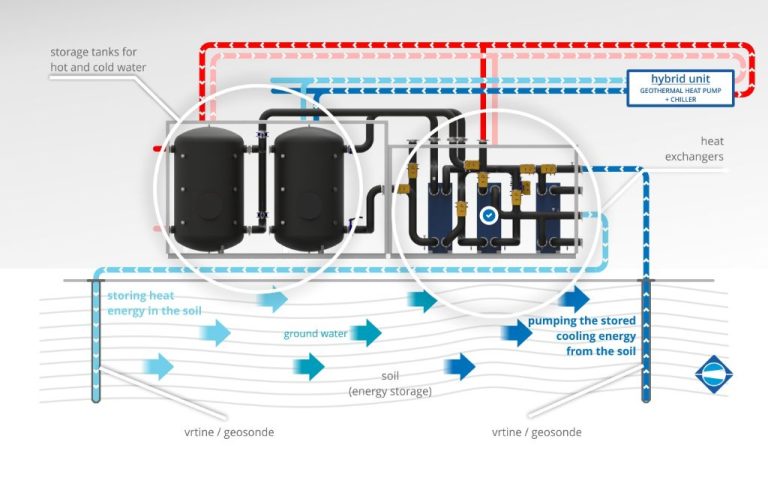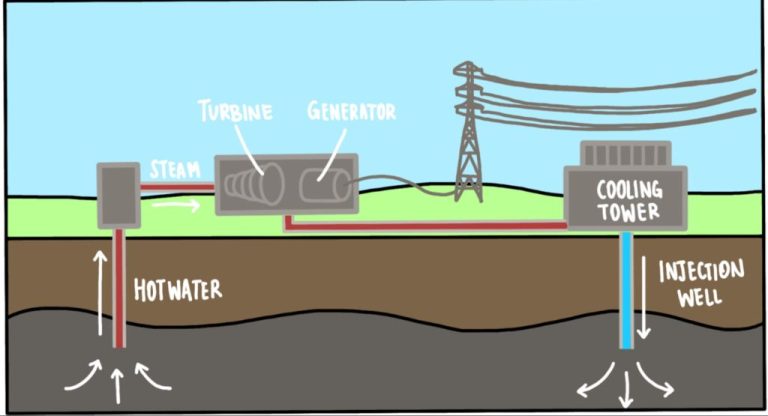Geothermal Energy’S Impact On Sustainability: A Comprehensive Analysis
Geothermal energy is thermal energy generated and stored in the Earth. It is derived from the Greek words geo (Earth) and therme (heat). Geothermal energy has ancient roots, and its use dates back thousands of years in some parts of the world. However, it has received renewed attention in recent decades as an important renewable energy source. Utilizing geothermal resources has a variety of applications to help promote environmental sustainability.
Geothermal energy facilitates the transition away from fossil fuels. Geothermal resources produce electricity without burning fossil fuels, directly displacing coal, gas, and oil for power generation. The reliable, steady nature of geothermal power makes it a renewable baseload source of energy. It can also offset fossil fuel use through direct heating/cooling applications. Transitioning to renewable energy, including geothermal, is key to sustainability as fossil fuels contribute heavily to climate change and impact human health through air pollution.
Geothermal Energy’s Environmental Benefits
One of the biggest advantages of geothermal energy is its low environmental impact compared to conventional power generation methods like coal, oil and natural gas. Geothermal plants emit little to no greenhouse gases, which makes this energy source much cleaner for the planet.
The carbon emissions from geothermal electricity generation are estimated to be just 5-10% of the carbon emissions from a traditional coal-fired power plant. The greenhouse gas emissions come primarily from the construction, maintenance and decommissioning of the plant, not the actual energy generation. This gives geothermal power one of the smallest carbon footprints among all energy sources.
Geothermal energy also does not require large amounts of land like solar or wind farms. The actual above-ground geothermal plant itself requires a relatively small land footprint. And since it generates constant power (not intermittent like wind/solar), it provides high energy output for the space utilized. Underground piping may take up additional land, but the ground above can still be utilized for other purposes like agriculture.
Compared to other thermal power plants, geothermal plants use far less water in the generation of electricity. The steam and water are recirculated in a closed-loop system with minimal losses. This enables geothermal plants to conserve water, especially in areas where water resources may be scarce.
Geothermal Power Generation
There are three main types of geothermal power plants used for electricity generation:
Dry Steam Plants
Dry steam plants utilize high temperature steam from geothermal reservoirs to directly spin turbine generators. The first geothermal power plant was a dry steam plant built in Italy in 1904. Dry steam resources are somewhat rare globally, found in areas with subsurface temperatures greater than 360°F. Steam is piped directly from geothermal wells to power plant turbines.
Flash Plants
Flash plants are the most common type of geothermal power plant worldwide today. They use water at temperatures greater than 360°F that is sprayed into a tank held at a much lower pressure, causing some of the fluid to rapidly vaporize or “flash.” The resulting steam then drives turbines. Any liquid not flashed is injected back into the reservoir. Flash plants require geothermal fluids of at least 360°F.
Binary Cycle Plants
Binary cycle plants are the most widely applicable and common geothermal technology today. They use lower temperature geothermal fluids (225-360°F) to heat a secondary working fluid that has a lower boiling point than water. This causes the secondary fluid to flash to vapor, which then drives turbine generators. The geothermal water is injected back into the reservoir. Binary cycle plants are the most flexible geothermal technology.
Global installed geothermal power capacity was around 15 gigawatts in 2019, providing about 0.3% of total global electricity generation. Capacity is still heavily concentrated in a few regions, with the top countries being the United States, Philippines, Indonesia, Turkey, and New Zealand. However, with technology improvements, the potential geothermal resource globally is far greater, estimated at hundreds of gigawatts. With supportive policies and deployment of enhanced geothermal systems, geothermal power capacity could expand substantially worldwide.
Uses of Geothermal Energy Beyond Power Generation
Beyond generating electricity, geothermal energy has many direct-use applications thanks to the heat it provides:
Heating and Cooling Systems
Geothermal heat pumps use shallow ground warmth as an exchange medium for heating and cooling. They transfer heat into the ground during warm months and extract warmth in cold months. Geothermal heat pumps can be used for space heating and cooling, as well as heating water.
Geothermal district heating systems provide warmth for entire communities by tapping into a network of pipes called geo-exchange systems. The geo-exchange systems circulate water or other liquids through the pipes to either collect underground warmth in winter or dissipate heat into the ground in summer.
Agricultural and Industrial Applications
Geothermal fluids can pasteurize milk, dry crops, heat water, and wash equipment. Direct heating of greenhouses and aquaculture ponds allows plants to grow faster and fish farming to be possible year-round.
Factories use geothermal steam or hot water for washing and bathing, and paper mills benefit from direct heating. Food processing plants use geothermal energy for producing sugar, drying grains and fruits, extracting salts, and curing meat products.
Geographic Distribution of Geothermal Resources
Geothermal energy potential exists in some capacity across vast stretches of the globe, but the highest-grade conventional hydrothermal resources are concentrated in areas of active tectonic plate boundaries where magma comes closer to the earth’s surface. This includes the Circum-Pacific Belt which runs along coasts of the Americas, eastern Asia, Australia, and New Zealand. Prime locations include western North, Central and South America, Iceland, the Philippines, Indonesia, and Japan. Significant potential also exists in volcanic island nations like Iceland, as well as East Africa’s Rift Valley system.
In the U.S., hydrothermal resources are located mainly in the western states including Alaska, Hawaii, Idaho, Utah, Oregon, California, and Nevada. Large, identified hydrothermal reservoirs capable of supporting commercial power generation are concentrated in just seven states: Alaska, Arizona, California, Hawaii, Idaho, Nevada and Oregon according to the U.S. Geological Survey.
Enhanced geothermal systems have a far wider geographic range than conventional hydrothermal, as hot dry rock resources may exist 3-10 kilometers deep virtually everywhere. While feasibly tapping into these EGS resources currently limits applications, enhanced systems have been successfully demonstrated in Europe, Australia, the U.S. and Japan.
Economic Viability
The capital costs required to build a new geothermal power plant are significant, often higher than other renewable energy sources like wind or solar. However, once built, geothermal plants have very low operating costs, since the fuel itself is free. This makes the levelized cost of electricity (LCOE) competitive over the long run.
According to the U.S. Department of Energy, the estimated LCOE for a new geothermal power plant in 2019 was $0.045-0.111 per kWh. This compares favorably to utility-scale solar at $0.037-0.087/kWh and onshore wind at $0.033-0.054/kWh. Geothermal’s LCOE is kept competitive by the technology’s high capacity factors, ability to provide baseload power, and decades-long operating lifespans.
The upfront capital costs for geothermal remain higher than wind and solar. However, as drilling techniques and power plant technologies improve over time, geothermal’s competitiveness on LCOE should also increase going forward.
Challenges and Limitations
While geothermal energy offers many benefits, there are some challenges and limitations to be aware of:
Upfront Capital Costs
Developing geothermal power plants requires significant upfront capital investment. Drilling wells thousands of feet into the earth and building the power plant infrastructure is expensive. This can make geothermal projects cost prohibitive, especially for smaller scale developments.
Technical Expertise Required
There is specialized expertise required to identify promising geothermal resources, design and engineer systems, and operate geothermal plants. The complex nature of geothermal development means companies must assemble teams with geoscience, drilling, engineering, and project management skills.
Site-Specific Nature of Resources
Geothermal energy is heavily dependent on subsurface geology, which varies tremendously. Getting an accurate understanding of the geothermal resource requires extensive site-specific analysis and investigation. This restricts geothermal development to areas with proven resources and makes it harder to rapidly scale up.
Latest Technological Advances
Significant progress has been made in two key areas that are helping to expand the use of geothermal energy – enhanced geothermal systems (EGS) and drilling innovations.
EGS technology works by pumping water into hot rock formations deep underground, which allows the thermal energy to be extracted to generate electricity. Engineers have improved EGS methods that create new fractures and widen existing ones in the rock, improving flow rates and production. New techniques using carbon dioxide instead of water as the working fluid in EGS systems have also shown promise.
Drilling technology has advanced considerably as well. New high-temperature drill bits and directional drilling techniques now allow wells to be drilled deeper, reaching hotter rock reservoirs. Drilling multiple wells from a single pad has reduced surface impacts. Automated drill rigs and remote operation are lowering costs and improving efficiency. Improvements in well casing integrity and zonal isolation have also been achieved.
With these ongoing technology improvements, geothermal energy production from previously unreachable geothermal resources will continue expanding in the years ahead. This will allow the many economic and environmental benefits of geothermal power to be realized at larger scales worldwide.
Government Policy Support
Governments around the world have implemented various incentives and policy mechanisms to support the development of geothermal energy. These policies aim to address the high upfront costs and risks associated with geothermal projects and make them more financially viable.
Some common policy tools include:
-
Feed-in tariffs – Guaranteed pricing per kWh for geothermal electricity fed into the grid, often at above-market rates.
-
Tax credits – Direct reductions in tax liability to offset project costs.
-
Cash grants – Upfront payments by governments to cover a share of development and drilling expenses.
-
Loan guarantees – Government backing for loans that reduces investor risk.
-
Renewable portfolio standards – Mandates that utilities source a portion of their energy from renewables like geothermal.
In the United States, federal tax credits have played a major role in geothermal growth. Projects can qualify for tax credits covering 10-30% of eligible costs. State-level renewable portfolio standards have also driven geothermal adoption in places like California and Nevada.
New Zealand has taken some of the most progressive steps to support geothermal. A National Policy Statement set a goal for 90% renewable electricity by 2025, enabling major geothermal investments. The country also provides a range of financial incentives.
Iceland stands as one of the greatest geothermal success stories globally, generating over 25% of its electricity from geothermal sources. Strong policy commitments and funding initiatives helped build expertise and tapped the country’s abundant geothermal resources.
Future Outlook and Conclusion
While geothermal energy generation currently accounts for a small portion of the world’s total renewable power capacity, the future growth outlook is promising. Technological improvements and declining costs are making geothermal increasingly competitive with conventional power sources.
The geothermal industry is projected to see steady expansion over the next decade and beyond. According to the International Energy Agency (IEA), global geothermal power generation capacity could grow by 26% from 2020 to 2025 under its forecasted sustainable development scenario. The IEA predicts geothermal capacity doubling or even tripling by 2040 if countries pursue more ambitious decarbonization pathways.
This continued growth will be driven by supportive government policies, rising electricity demand, phasing out of fossil fuel plants, and the need for stable baseload renewable power to complement variable sources like wind and solar. Key geothermal markets like Indonesia, Kenya, Mexico, and Turkey are expected to lead capacity additions.
Geothermal power’s ability to provide consistent, weather-independent renewable electricity around the clock will be an important asset in enabling the global transition away from polluting fossil fuels. Along with other clean energy technologies like battery storage and green hydrogen, geothermal can help pave the way for a net-zero emissions future while spurring sustainable economic development.
With increased adoption worldwide, geothermal energy has the potential to play a major role in decarbonizing electricity grids, improving energy access, and catalyzing a cleaner energy paradigm over the coming decades.

